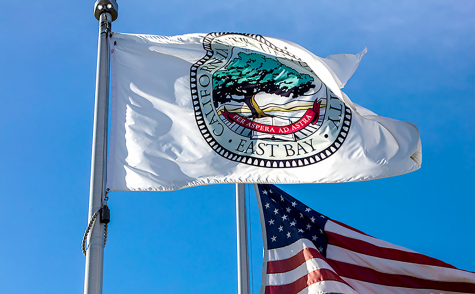California releases emergency marijuana laws
Recreational weed now for sale
Richard Colorado has been growing marijuana privately for over 20 years. Although he was growing what was considered “recreational” product, he was able to vend his product to medical dispensaries legally for the last eight years.
The Collective Cultivation Act enabled him to do this, as a sort of loophole. Cities all had legal plant limits, but growers like Colorado could circumvent these limits. Medical marijuana card holders, known as patients, could combine their medical cards to surpass the legal plant limit.
Colorado would grow for his “patients” as a “caregiver” with the combined cards through the Collective Cultivation Act. This is how Colorado was able to legally grow 288 plants in his residence.
Richard Colorado’s growing career changed on Jan. 1, when new emergency cannabis laws went into effect and determined how California moves forward as a cannabis-legal state. Under these new laws, recreational growing limits growers to six plants in the new year, which will inevitably change the way Colorado conducts business.
“I’m taking the legal route this time,” Colorado said. “I’m very thankful that I will be able to partner up with the local dispensary that I’ve been vending to,” he continued. “They’re going to help me open up a licensed medical grow in a nearby warehouse, and I couldn’t be happier.”
On Nov. 16, California Legislature released an emergency list of laws and regulations for the sale, growing and consumption of marijuana in 2018. The laws went into effect on Jan. 1 and retail licenses on recreational marijuana are now available.
The laws released on recreational marijuana for the new year are temporary because the California Government is unsure how they will regulate it, according to CA.gov. Mid-year they will revise the laws on the sale of recreational marijuana.
Under existing guidelines, medicinal and recreational marijuana have mostly been treated the same. Medical marijuana is currently available for purchase if you have obtained a medical marijuana prescription and this will essentially continue, but under the emergency regulations, recreational marijuana will be scrutinized more than medical marijuana.
Recreational marijuana is available for purchase for those who are 21 years of age and older and you will not need a medical prescription. However, medical marijuana patients will not be charged sales tax for their medical marijuana, and recreational users will.
“The sales of recreational marijuana will definitely impact the sales of medical marijuana, but medical dispensaries will be able to offer better, lab tested product for consumers,” says Kenny Elliot, grower for Collective Efforts Cannabis.
The recreational market for marijuana in California is still a grey area at the moment, which is why the retail business licences will be temporary. The California Government wants to test the waters with recreational marijuana, and they had to release some sort of laws before it got out of control come 2018.
The State of California does not want to lose any potential tax dollars through those who wish to grow large amounts without medical licensing, because it is difficult to track the cash product nature of the plants. Those who will be growing medically will have to barcode each of their plants, and they will be scanned and weighed throughout the entire growing process.
This will keep track of the weight of the stems, the trimmed leaves and the final product of the buds themselves, so that nothing goes untaxed. All of the excess trimmed leaves and stems can be used to create other products such as hash and different forms of concentrates that have medicinal properties.
“It’s a pain in my ass is what it is,” says Hunter Fiola, head grower of Collective Efforts Cannabis. “I’m going to be doing more office paperwork than growing. They’re going to have to hire someone else to do this as we keep expanding.”
Under the new laws in 2018, growers will not be able to use the Collective Cultivation Act to combine medical prescriptions to exceed the plant limit, which is now six plants in California. This defeats the purpose of growing outside of personal use, unless you become medically licensed to grow for a profit.
Using the Collective Cultivation Act was a loophole to begin with, stating that the grower is the caregiver for the patients that have lent their medical documents to. Growing will still be illegal for those wishing to sell their product outside of retail establishments. You can only give your product away, or “share” it, according to the official CA.gov website.
Growing marijuana with intent to sell to recreational users may result in a felony, according to the CA.gov website. If you do wish to grow recreationally, it must be for personal use, and with a limit of six plants per household. The plants must be secure from public sight and smell, which then makes it illegal and you could get a misdemeanor.
The new laws in 2018 also favor indoor growing, as no city can prohibit indoor growing. The higher production costs of indoor growing don’t make it worth it at the end of the cycle. Outdoor growing is more cost efficient, but you can only harvest once per year.
The plants need to be out of public sight and smell, which makes it unlikely that outdoor growing will be possible. Most cities have already prohibited outdoor growing, and the California Legislature has left it up to the cities to decide if they will allow it.
This creates an increase in the demand of legal marijuana, whether medical or recreational. Medical patients and recreational users alike will have difficulty legally growing enough to satisfy their needs. Readily available legal marijuana for purchase will be consumers’ best option.










